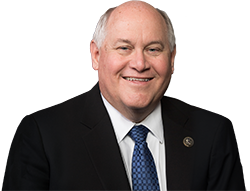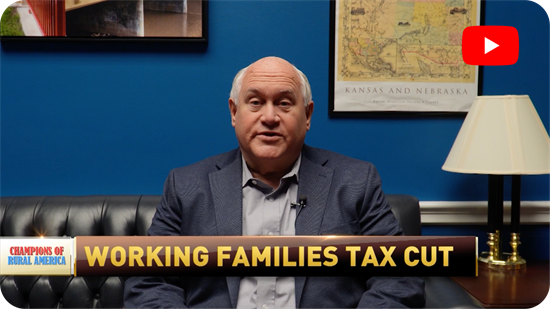ICYMI: Estes Joins RFD-TV’s Champions of Rural America
Washington,
September 29, 2025
|
Hannah Rawles
((202) 225-6216)
U.S. Congressman Ron Estes (R-Kansas) joined RFD-TV’s Champions of Rural America to discuss the pro-growth provisions for rural America in the Working Families Tax Cuts, investments into rural health care, and more. Watch the interview on YouTube and Rumble.
On how Congressman Estes’s Research and Development (R&D) Provision helps grow American manufacturing: “It's great when you look at how much we've tried to make sure that this was as much permanent as we could put into the bill, so people can plan for the long term. But also look at things about how do we grow local economies? How do we help that agriculture base by having enough manufacturing within the facility? “One of the things I've been a big champion on is research and development and making sure that we were able to write off the research and development cost. So that as folks do things, even if it's a conveyor belt, it's not necessarily developing a new drug, but the actual companies that end up making conveyor systems and you know, have to put in new controllers and switches. So, research and development authorization is important for them. “Also, capital purchases for new equipment, whether you're buying the new tractor or a new combine, being able to deduct that off of your operating cost just to help make sure that you continue to have that growth and helps the local equipment manufacturer and local equipment dealer as well.” On reinvestment into western companies to maintain rural residential populations help them prosper: “I think part of what we've seen, certainly over the last several decades, is … as technology has improved the efficiency on the farm, and ranching operations, we've actually seen … the population decline. Partly that's because you don't have … enough jobs around in the community to help keep the second and third son there in the neighborhood, in order to help keep the economy going. “By being able to have more efficient, more effective operations within a local community, you're able to keep more of the people that grow up on the farm in the rural areas. And at the end of the day, you end up making sure that you keep the grocery store, you keep the hospital, you keep the drugstore, you know, all of those things that make all of our important communities the places that we want to live in.” On two key provisions of the Working Families Tax Cuts: “Two most important [deductions] that are going to affect people [are] the 199A small business deduction, which, depends on how you're structured, … it's going to help the small businesses that maybe you've structured your farm that way, maybe you're structured some of the operations within the community are that way. So they'll be able to compete against these big corporations that have a lower corporate tax as well. So that's an important provision. “Probably one of the things that's most important that's going to affect everybody is at some time we're all going to die. And being able to increase the exemption on the Death Tax was very important. We'd looked at how do we increase it – almost doubled it – and we made it permanent, and we indexed it for inflation. So that we don't have to look five or eight years down the road and see a cliff out there and be concerned about. It's there and it's set up and it's going to help us in the long term to help our current generation who are the stewards of our farmland be able to pass that off to the next generation.” On the Rural Health Transformation Fund: “Basically what we were wanting to do was make sure that we supported rural hospitals. Obviously … if you look back over the last several years, there's been a disproportionately small percentage of Medicaid and other funding that's gone to our rural hospitals. And as we've seen … those hospitals are strained and … the structures that are set up really fit more within the larger cities. So, we wanted to make sure that we supported rural hospitals. There's a $50 billion fund to help that. Half of that's going proportionally to the states. The other half of it's going to be set up on grants for different projects or different approaches.” |








